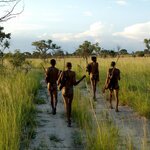Evolution

Edentulism, the absence of teeth, has evolved on multiple occasions within vertebrates including birds, turtles, and a few groups of mammals such as anteaters, baleen whales and pangolins, but where early birds are concerned, the fossil record is fragmentary.
A question that has intrigued biologists is whether teeth were lost in the common ancestor of all living birds or convergently in two or more independent lineages of birds.
A research team using the degraded remnants of tooth genes in birds to determine when birds lost their teeth believes that teeth were lost in the common…

The evolutionary adaptations of ancient lobe-finned fish transformed pectoral fins used underwater into strong, bony structures that enabled emerging tetrapods, animals with limbs, to allow them crawl in shallow water or on land.
The disconnect between paleontology and evolutionary biology has been why the modern structure called the autopod, comprising wrists and fingers or ankles and toes, has no obvious morphological counterpart in the fins of living fishes.
In a Proceedings of the National Academy of Sciences paper, researchers argue previous efforts to connect fin and fingers…
All complex life, including plants, animals and fungi, consists if of eukaryotic cells, cells with a nucleus, transport mechanisms and often organelles like mitochondria that perform the functions an organism needs to stay alive and healthy. Humans have 220 different kinds of eukaryotic cells which control everything from thinking and locomotion to reproduction and immune defense.
Because of that commonality, the evolution of the eukaryotic cell is considered one of the most critical events in the history of life on Earth. Without it, earth populated entirely by prokaryotes, single-celled…

Skin color varies according to latitude and therefore by the intensity of incident ultraviolet light; according to biologists, that is why individuals living at low latitudes developed darker skin, whereas those living at high latitudes ended up with paler pigmentation.
Yet the mutations that lightened the skin, probably owing to the need to synthesize vitamin D at latitudes with less solar irradiation, also increase the probability of developing melanoma or skin cancer, which is a negative in natural selection.
In the trade-off of evolution, lighter skin is winning. …

In the last 20,000 years, Europeans and Asians became numerous and their descendants now comprise the bulk of our 7 billion population. Prior to that, for 130,000 years, the Khoisan (they call themselves Bushmen), of Namibia reigned supreme.
Their lifestyles remain relatively primitive. And genetically, they have not changed all that much either. They number only about 100,000 and a study in Nature Communications compared nearly all the genes of these individuals -- their genomes -- with the genomes of people from around the world, and discovered that the inflow of new genes into the…

Usually blind sages revealing the secrets of the universe are Asian. Scotland doesn't get enough respect that way but a centipede is defying the stereotype.
Arthropods are one of Earth's real success stories, with more species than any other animal phylum. Genome sequencing has been skewed towards the more popular insects, and even an arachnid and a crustacean, and now finally the myriapods (centipedes and millipedes) are emerging from the dark.
Scientists have now sequenced the genome of the centipede Strigamia maritima, enabling them to reconstruct many features of the genetic make-up of…

Insects are the most diverse group of animals on earth. They inhabit nearly all terrestrial habitats. One of the factors underlying this success is the ability of insect eggs to survive in adverse conditions.
For a long time the ability to survive these adverse conditions has been attributed to maternal investment in the form of a protective eggshell. However, my research in the red flour beetle (Tribolium castaneum) shows that contrary to common belief, insect eggs are far from helpless.
The insect egg itself develops a cellular layer around the egg called the serosa. This serosa protects…

We like to think of evolution as a fine-tuning process, one that whittles away genetic imperfections and redundancies and converges on a more efficient system because of 'survival of the fittest'.
But natural selection is just one mechanism of evolution and what is fittest at one point may not have been fittest at another, yet could still be inherited. Our bodies are full of parts that we inherited and either don't work anymore or are rather buggy and other parts have simply found a way to make work.
Take our DNA. Some of it is 'junk' and 50 percent of our genome is comprised of …

Most people think that biting is the way that aquatic creatures capture prey. Not so, instead suction is far more common.
That is why the diversity of skull shapes in biters is so much greater, according to a new study. Suction feeding limits skulls shapes because of the structural requirements for suction feeding.
"When you look at the skulls of biters, the diversity is astounding compared to suction feeders," said Rita Mehta, assistant professor of ecology and evolutionary biology at U.C. Santa Cruz.
With more than 800 species, including both suction feeders and biters, the…

The human Y chromosome has retained only 3% of its ancestral genes. So why is it a shadow of its former self? Rafael Anderson Gonzales Mendoza/Flickr, CC BY-NC-SA
By Jenny Graves, La Trobe University
The Y chromosome, that little chain of genes that determines the sex of humans, is not as tough as you might think. In fact, if we look at the Y chromosome over the course of our evolution we’ve seen it shrink at an alarming rate.
So will it one day completely disappear? And what happens to the human race if it does? It’s a topic that’s long been debated and we’ve covered before – but a…